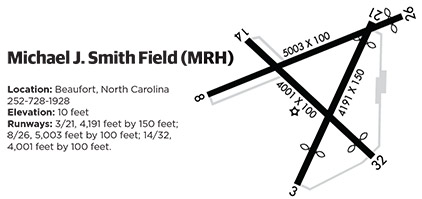AOPA Fly-In: May 21, 2016, Michael J. Smith Field (MRH)
A special section for the AOPA Fly-In at Beaufort, North Carolina
Beaufort’s Michael J. Smith Field (MRH) has multiplelong, wide runways.
Go Coastal
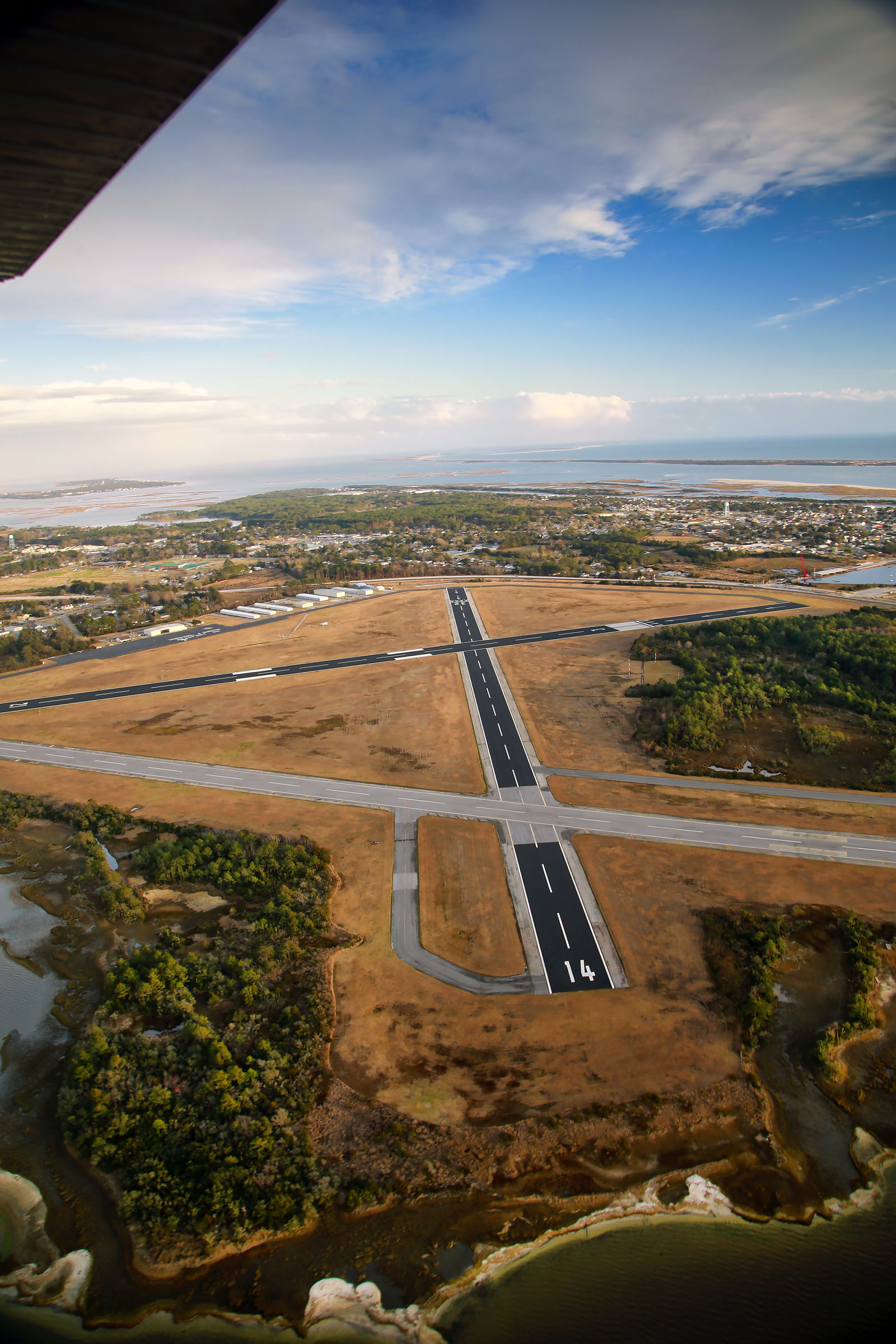 Fly in to AOPA’s first fly-in of 2016 over some of the most gorgeous scenery in the United States. Lighthouses, scenic waterways, boats, wildlife: Beaufort, North Carolina, has it all. Combine flying and the ocean with a great day of food, seminars, exhibits, and aircraft for a fabulous day at the beach.
Fly in to AOPA’s first fly-in of 2016 over some of the most gorgeous scenery in the United States. Lighthouses, scenic waterways, boats, wildlife: Beaufort, North Carolina, has it all. Combine flying and the ocean with a great day of food, seminars, exhibits, and aircraft for a fabulous day at the beach.
Event Schedule
A variety of events and activities will be available for AOPA members, pilots, and aviation enthusiasts.
Friday, May 20
6:30 to 9:30 p.m.—Barnstormers Party presented by Jeppesen
Saturday, May 21
7:30 to 10:30 a.m.—Rusty Pilots Breakfast and Seminar, You Can Fly Pavilion
8 a.m. to 9:30 a.m.—Pancake Breakfast, Main Stage
9 a.m. to 4 p.m.—Exhibits and Aircraft Display Open
9:15 a.m. to 2:30 p.m.—Seminars
11 a.m. to 2 p.m.—Lunch
2:35 to 3:30 p.m.—Pilot Town Hall with AOPA President Mark Baker, Main Stage
3:45 to 4 p.m.—Ice Cream Social sponsored by Heaven’s Landing
4 p.m.—Fly-In concludes

Join us on the coast
Atlantic beach, North Carolina, is just one of three coastal towns easily accessible from Michael J. Smith Field.
Flying into Michael J. Smith field (MRH) in Beaufort, North Carolina, is coastal aviating at its finest. With lighthouses dotting the shoreline, boats plying the waterways, and marshes and inlets carving rivulets into the landscape, the view from your aircraft is unparalleled. And the residents of this coastal town can’t wait to share their slice of paradise with you.
Edward Teach discovered this deep-water ocean port long before it became a tourist destination. The pirate Blackbeard had a home in Beaufort, and North Carolina has thousands of shipwrecks along its coast—including that of the famous pirate. His ship—the Queen Anne’s Revenge—is in Beaufort Inlet, off the approach to MRH’s Runway 3. Area shipwrecks date from as far back as 1718 to the sinking of a German U-boat during World War II. Shoals, nor’easters, hurricanes, pirates, and two world wars sent thousands of ships to rest on the sand under the sea. This “graveyard of the Atlantic” is a popular spot for scuba divers. Each of the ships has become an artificial reef. You can see some wrecks from the air.
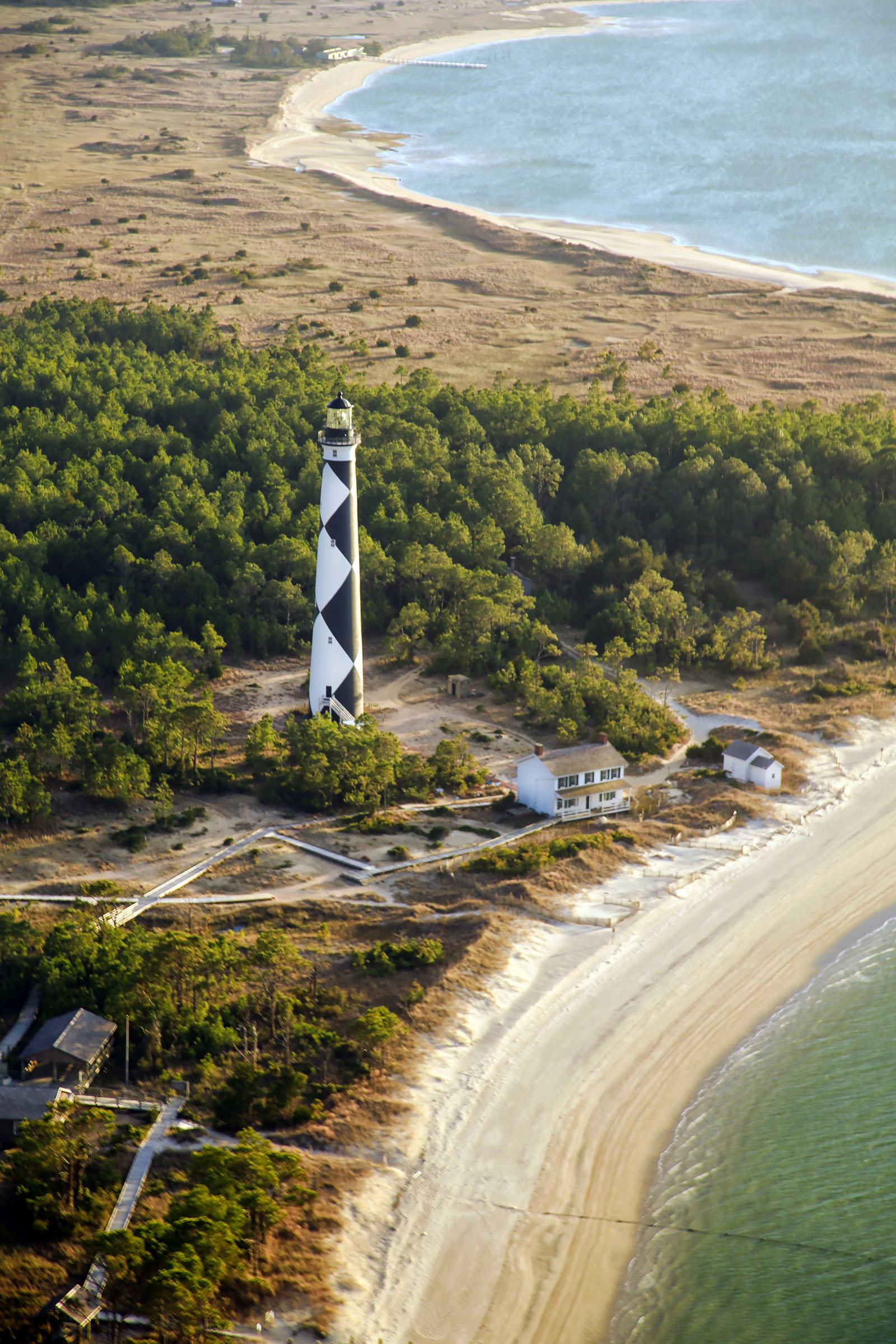 Michael J. Smith Field was built during World War II as a Marine Corps aviation training facility, which is why its three runways are so long and wide. The field was renamed in the late 1980s for the pilot of the space shuttle Challenger, which broke up in flight in 1986. Smith was a hometown boy of Beaufort. There’s a photo memorial to him in Southern Air, the friendly FBO on the field. Situated on 400 acres, the airport has 72 based aircraft as well as lots of seagulls. Those sky rats swoop down and have an oyster lunch, and then drop the shells on the runway. Airport manager Joe Jones has the pilots of nearby Marine Corps Air Station Cherry Point sweep away the shells with their powerful Bell Boeing V–22 Ospreys.
Michael J. Smith Field was built during World War II as a Marine Corps aviation training facility, which is why its three runways are so long and wide. The field was renamed in the late 1980s for the pilot of the space shuttle Challenger, which broke up in flight in 1986. Smith was a hometown boy of Beaufort. There’s a photo memorial to him in Southern Air, the friendly FBO on the field. Situated on 400 acres, the airport has 72 based aircraft as well as lots of seagulls. Those sky rats swoop down and have an oyster lunch, and then drop the shells on the runway. Airport manager Joe Jones has the pilots of nearby Marine Corps Air Station Cherry Point sweep away the shells with their powerful Bell Boeing V–22 Ospreys.
Cherry Point is a good neighbor. On 13,000 acres, it was established as a training base in 1941 and is home to the 2nd Marine Corps Air Wing. Training in Osprey, Prowlers, Harriers, and more earns the base its welcoming sign, which reads “Pardon our noise, it’s the sound of freedom.”
According to Carol Lohr, executive director of the Crystal Coast Tourism Authority, the best spot to see the beauty of the Crystal Coast is from the Cape Lookout lighthouse. “I have been all over the world,” she says. “But the most beautiful view I’ve ever seen is from that lighthouse.” The first lighthouse began working in 1812; in 1859 the present-day lighthouse was built. It shines its light 150 feet above the mean water level. You can see dolphins, whales, and other sea life from the top of the lighthouse. AOPA members can get discounted tours of the area.
Cape Lookout National Seashore was established as a national park 50 years ago. It is a favorite spot for boating, fishing, and watersports. A major draw for visitors, the wild horses of Shackleford Banks are descendants of Spanish mustangs that swam ashore when their ships wrecked on the shoals. They are protected by the National Park Service.
The legend of Blackbeard
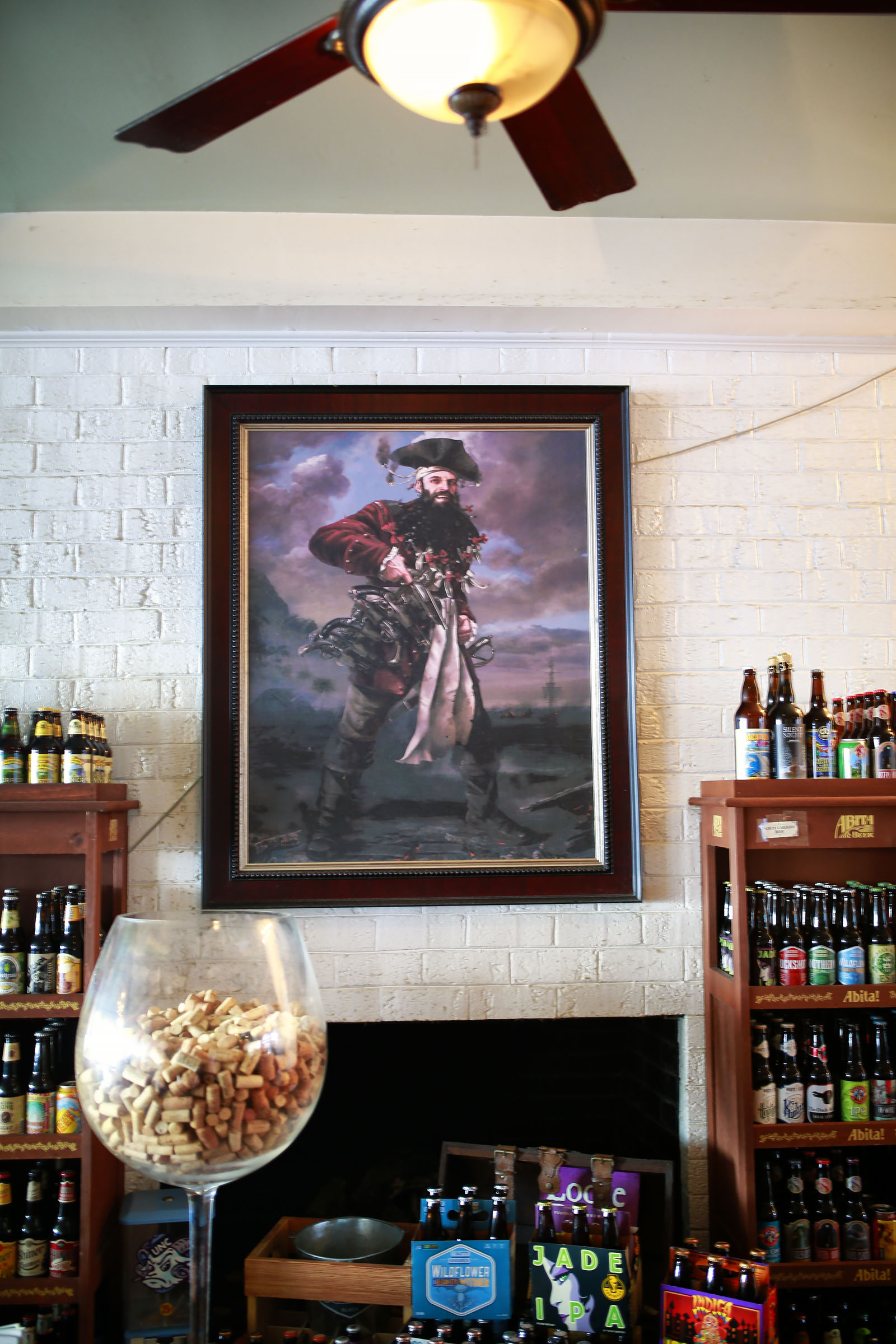 After holding the harbor at Charleston, South Carolina, hostage, Edward Teach—known as Blackbeard the pirate—ran his ship, the Queen Anne’s Revenge, aground on the shoals off Beaufort, North Carolina. Blackbeard’s storied and romanticized past has captured imaginations for years. Even though he plundered for less than five years, Blackbeard is one of the most notorious pirates in American history. He had a thick, long black beard; a “fearsome” appearance; and allegedly tied lit fuses or ribbons to his hair. A writer of the time said of the pirate, “such a figure that imagination cannot form an idea of a fury from hell to look more frightful.”
After holding the harbor at Charleston, South Carolina, hostage, Edward Teach—known as Blackbeard the pirate—ran his ship, the Queen Anne’s Revenge, aground on the shoals off Beaufort, North Carolina. Blackbeard’s storied and romanticized past has captured imaginations for years. Even though he plundered for less than five years, Blackbeard is one of the most notorious pirates in American history. He had a thick, long black beard; a “fearsome” appearance; and allegedly tied lit fuses or ribbons to his hair. A writer of the time said of the pirate, “such a figure that imagination cannot form an idea of a fury from hell to look more frightful.”
The pirate had a house that still stands in Beaufort. Beaufort is North Carolina’s third oldest town, laid out in 1709. More than 150 original structures, Bahamian- and West Indies-style homes and public buildings, have been restored. The Beaufort Historic Site downtown offers living history demonstrations. Blackbeard was beheaded on nearby Ocracoke Island in November 1718.
Many shops in the town feature pirate trinkets and treasures found from the shipwrecks. Blackbeard is the star at Queen Anne’s Revenge, a bar and restaurant on Front Street (above).
Great day at the airport
You won’t want to miss the activities at AOPA’s first fly-in of 2016. Join us Friday for tours throughout the day to Beaufort sites. The Barnstormers Party that night is presented by Jeppesen. There will be a catered dinner and music by a local band at the airport.
The day dawns bright and early with a pancake breakfast for all served by AOPA staff and local volunteers. There’s a special pancake breakfast for Rusty Pilots who want to get information on how to get back into the air, with presentations and educational information. At 9 a.m. the exhibits and aircraft display open—free to all. Stroll among 40 diverse and interesting aircraft on display and shop with the more than 60 exhibitors, including AOPA’s own village of products and services.
Seminars presented by aviation experts such as Adrian Eichhorn (see page R–7), Dr. Ian Fries, AOPA Pilot Editor in Chief Tom Haines, and Turbine Pilot Editor/Editor at Lareg Tom Horne take place throughout the day. Lunch is served by a local catering company. AOPA President Mark Baker ends the day’s presentations with his popular Town Hall Meeting, where local pilots and aviation enthusiasts learn the latest general aviation news, and later there is an ice cream social sponsored by Heaven’s Landing.
It doesn’t hurt to ask
Let the Cherry Point controllers help you through restricted airspace
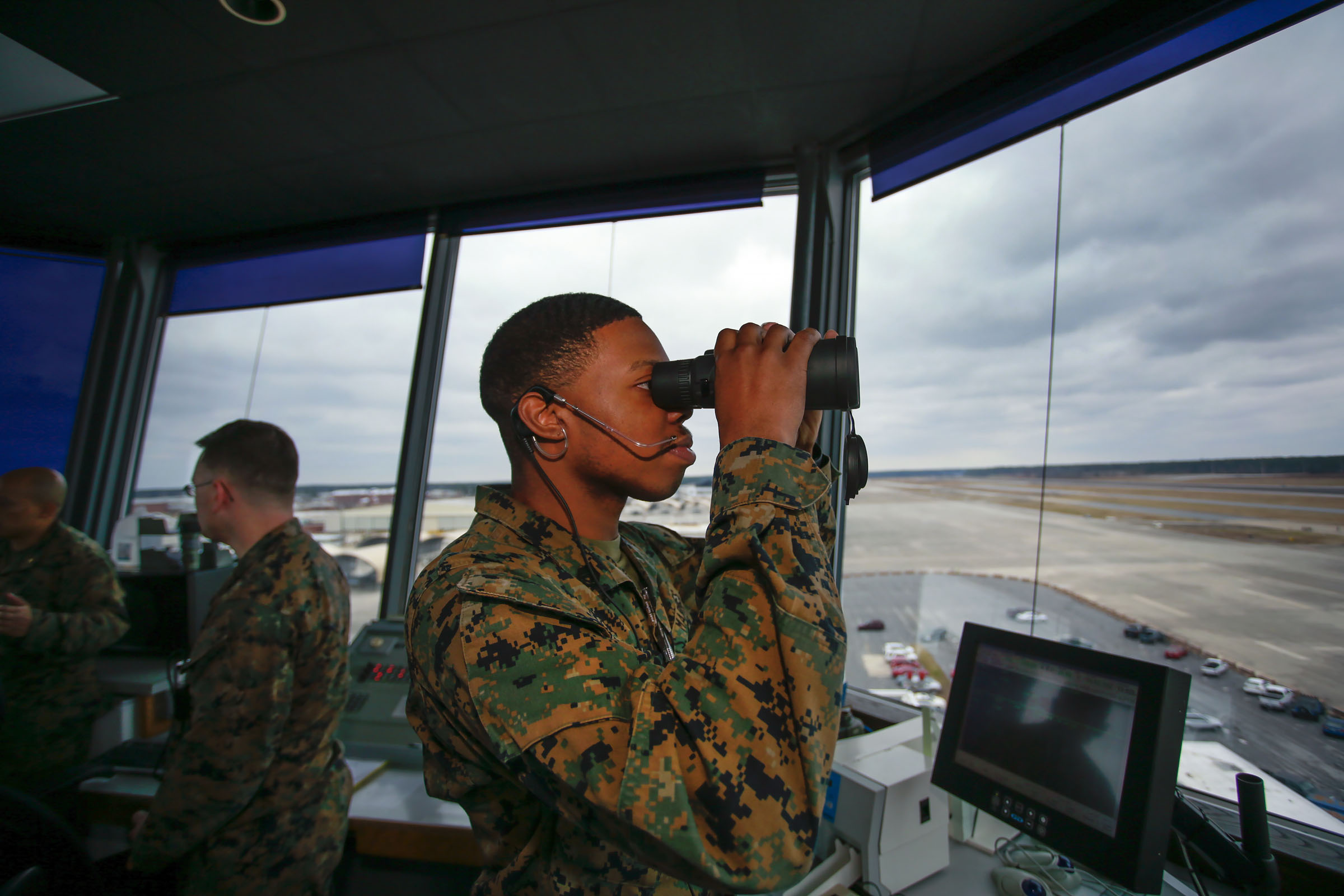
Located north of Beaufort and 15 nautical miles from Michael J. Smith Field, Cherry Point Marine Corps Air Station was established in 1941. It is home to the 2nd Marine Corps Air Wing and is a major training hub for the Marines, Navy, and Air Force.
From the EA–6B Prowler to the KC–130J Hercules and the AV–8B Harrier to the CH–53E Super Stallion, the aircraft of Cherry Point are the amazing machines of the United States military. Cherry Point’s four massive runways are a source of pride on this 13,000-acre base, one of the world’s largest air stations. It is also one of the best all-weather jet bases and operates an active all-service bombing range.
But don’t let all that power scare you. The Marines at Cherry Point are excited that you’ll be flying into Beaufort and want to help you safely navigate their airspace. Gunnery Sgt. Louis Cruz, a general aviation pilot himself who flies a Cessna 172, briefed AOPA staff on the air station during a tour of the air traffic control tower and radio room. (Public Information Officer Mike Barton also flies a Cessna 172 and is based at Beaufort).
“There’s no need to avoid the area,” said Cruz. “We want to help you transition through safely.”
Cruz first recommends you do learn about the restricted airspace (see “Restricted Areas” sidebar). He also suggests you “improve your scan rate”—keep your eyes on the sky and less on the panel while in the area. Monitor the Cherry Point frequency and don’t be afraid to talk directly to the air station. “We are operationally driven here, meaning training is going on constantly. But we also know where everyone is; we can and will transition you through if we know where and when you are here,” Cruz said. “Always ask. It doesn’t hurt to ask.”
During the fly-in, the tower will be manned by the Marines and civilian ATC. Additional personnel will also be on hand.
Restricted areas
Alert area—High volume or unusual activity possible; exercise caution. No permission required to enter.
MOA—Military operations area; No permission required to enter.
Restricted area—Hazards may exist; entry and passage allowed on request.
Brush up before you go: www.airsafetyinstitute.org/kbyg
Exclusive Cherry Point Marine CorpsAir Station tours Available Friday, May 20, limited availability, sign up on the website.
Trip of a lifetime
Bonanza owner to fly around the world
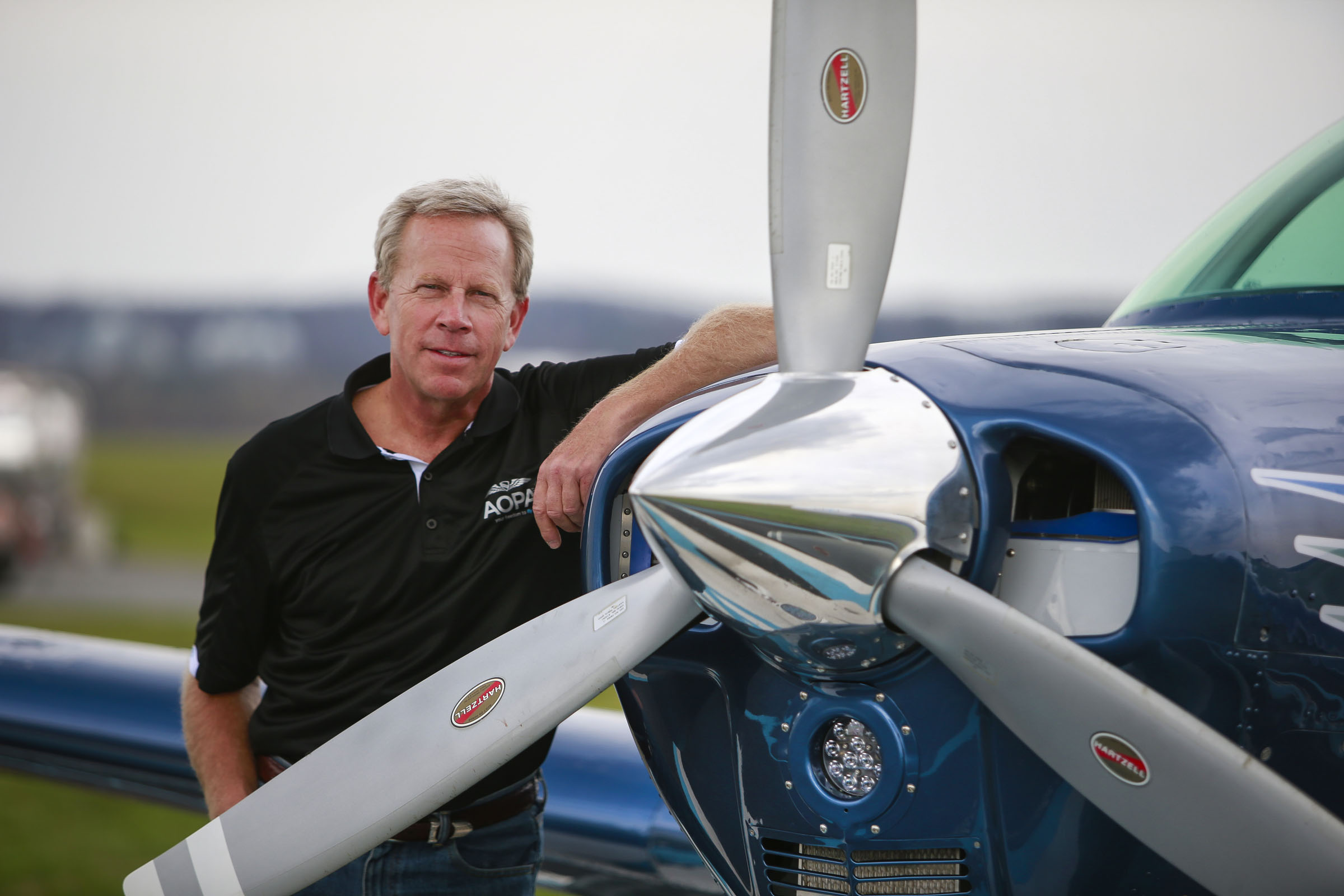 Adrian Eichhorn’s biggest fear for his planned around-the-world flight in his Beechcraft Bonanza A36 wasn’t sleeplessness, mechanical problems, or boredom. Nope, it was the reaction he may receive flying over the Middle East with the modification to his aircraft that is propelling him—100-gallon tip tanks on the wings that might just resemble mini-missile launchers.
Adrian Eichhorn’s biggest fear for his planned around-the-world flight in his Beechcraft Bonanza A36 wasn’t sleeplessness, mechanical problems, or boredom. Nope, it was the reaction he may receive flying over the Middle East with the modification to his aircraft that is propelling him—100-gallon tip tanks on the wings that might just resemble mini-missile launchers.
Eichhorn launched his round-the-world flight in April, flying in five continents and over three oceans for a 225-hour personal achievement that, he says, has nothing to do with record books. “This isn’t a record, it isn’t a best this or that, it’s pushing the limits of anything I’ve ever done,” said the 62-year-old JetBlue Airways pilot. He remembers that aviator/inventor Burt Rutan once signed his autograph book by drawing a picture of Voyager and writing, “Adventure is the essence of life.”
“It stuck with me. And now I’m at a point in my life, both time and financially, that I can do it,” he said. “This trip will push the aircraft performance, the endurance, the human factors. I want to do it to learn and to share what I learn.”
It was at the end of a flight into Greenland that Eichhorn looked at his airplane and thought it was maybe not as perfect as it could be. Aircraft maintenance has become his avocation, and he recently was awarded the 2016 Maintenance Technician of the Year award by the FAA/industry General Aviation Awards program.
For the past four and a half years, he’s been dismantling and restructuring his 54-year-old Bonanza. He’s enlarged the baggage door, replaced the skin—“Sheet metal work is a form of therapy,” he says—rebuilt the panel, rebuilt the wings, and added those tip tanks. He will have 270 gallons of usable fuel, which could serve him well on the long-haul flights this trip will demand. The longest leg will be from Hilo, Hawaii, to Long Beach, California, where JetBlue flies.
“Flying GA keeps me sharp. I never want to be an airline pilot who doesn’t know how to fly,” he said.
Eichhorn will share his adventure at the AOPA Fly-In in Beaufort—if he returns in time.
Last shot of the Civil War
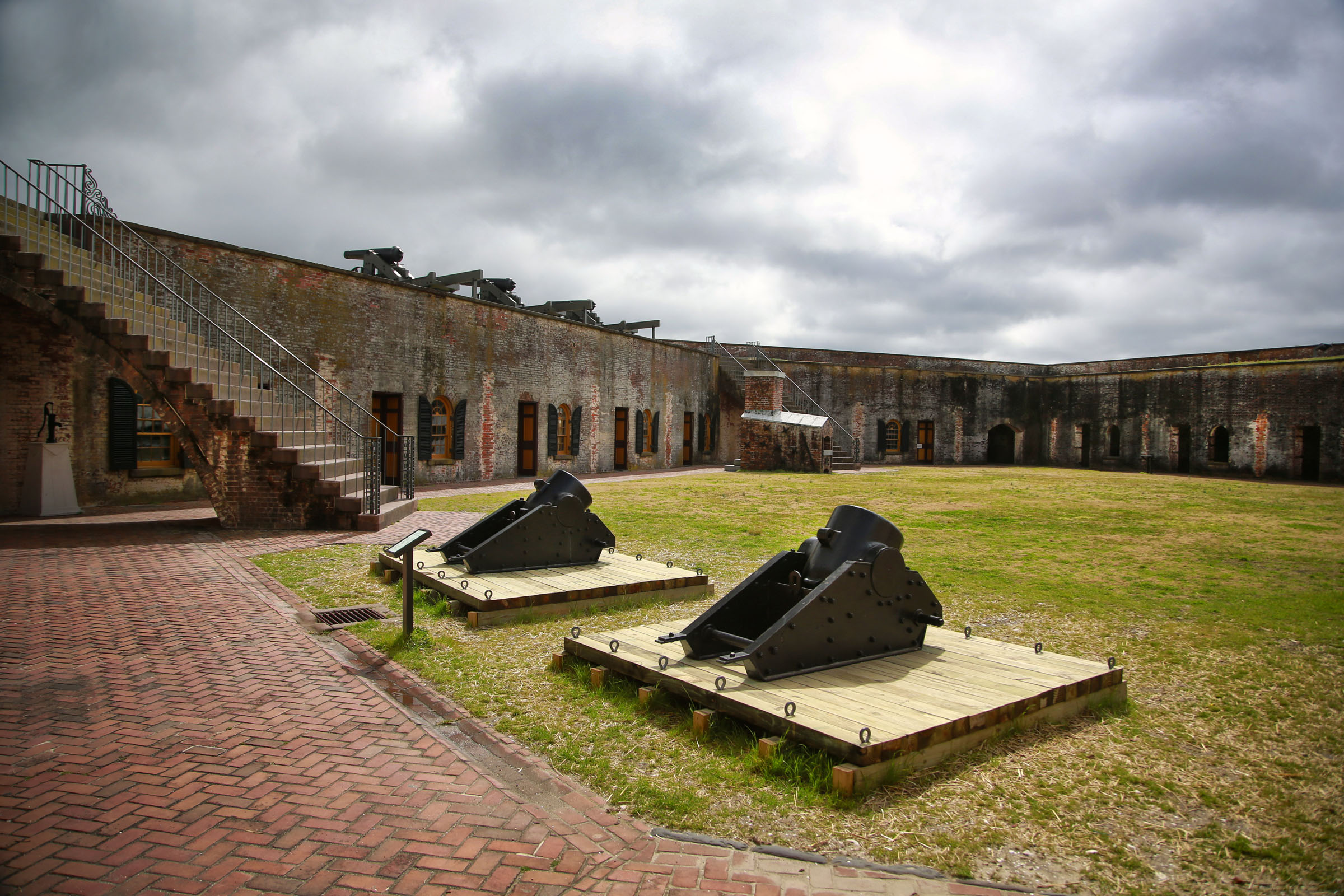 The final time that North Carolina’s Fort Macon was occupied by soldiers was during World War II.
The final time that North Carolina’s Fort Macon was occupied by soldiers was during World War II.
The 1826 fort was part of the National Defense chain of coastal fortifications, was a pivotal player in the Civil War and the Spanish-American War, and served as a military prison. During World War II, while Coast Artillery troops were stationed at Fort Macon, some unsuspecting soldiers rolled Civil War-era cannonballs into the fireplaces as andirons, mistaking them for solid iron shot. The powder-filled balls exploded, killing two men and injuring others—thus firing the “last shot of the Civil War.”
Located at the eastern point of Bogue Banks, Fort Macon was constructed to defend Beaufort Inlet. The fort was nearly destroyed early in the Civil War. Four hundred Confederate soldiers attempted to defend the fort but Union forces under Brig. Gen. John G. Parke pounded it, hitting it 540 times. The Union controlled Fort Macon for the rest of the war.
The 424 acres of the fort were sold to North Carolina in 1924 for $1 to be used as a public park. The Civilian Conservation Corps fully restored Fort Macon, and it opened as a state park in 1936. Join AOPA members for tours.
Make it a pilgrimage
Stop by First Flight on your way to Beaufort
If you haven’t made the pilgrimage to the birthplace of flight, AOPA’s Fly-In at Beaufort could give you the opportunity. A beautiful flight along the Outer Banks shoreline will take you to First Flight Airport (FFA).
Paying close attention to airspace is essential, as the North Carolina coastline is dotted with military operations areas (MOAs) and some restricted airspace, as well as National Wildlife Refuge areas. Pilots are requested to fly no lower than 2,000 feet above designated wildlife areas (Advisory Circular 91-36D); contact Cherry Point Approach on 119.35 MHz for the status of the MOAs and restricted airspace. Utilizing VFR flight following from Cherry Point is recommended.
Following the shoreline the 122 nautical miles from Michael J. Smith Field (MRH) to First Flight is only a short flight. Using GPS fixes and visual landmarks to navigate will keep you out of restricted airspace and over the coast. Dare County Regional Airport (MQI) in Manteo, south of First Flight, offers fuel and other services not available elsewhere along the route.
Aircraft parking at First Flight is limited. Dare County is a good alternate, and ground transportation can be arranged to visit the Wright Brothers National Memorial and museum at FFA.
Pilots flying in from First Flight are requested to contact Beaufort Advisory as they are abeam Harker’s Island to receive instructions for entering the traffic pattern. A notam and Pilot Information Packet with special arrival and departure procedures will be published approximately three weeks before the fly-in (www.aopa.org/flyins/MRH).
Suggested GPS routing
Pilots may avoid restricted airspace from Beaufort to First Flight Airport by using flight following and hugging the shoreline along this suggested GPS route: KMRH-VPATO-VPOKY-KHSE-VPGHI-VPUMO-KMQI-KFFA.
FLY-IN TIPS
• Read the notam, and get familiar with arrival procedures that will be published three weeks prior to the event. MRH is a nontowered airport, but a special advisory service will be provided to assist pilots during busy arrival and departure times.
• Know the airspace: MRH is surrounded by several alert areas, MOAs, and restricted airspace related to Cherry Point MCAS. Review the airspace carefully and monitor Cherry Point Approach on 119.35 MHz for information and updates on traffic conditions at MRH. Also be aware of National Wildlife Refuge areas along the coast where pilots are requested to fly above 2,000 feet.
• MRH has multiple runways; however, during fly-in hours not all will be in use. Check the notams and read the special arrival procedures.those busy airspaces.
